

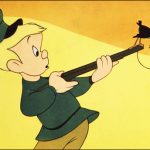
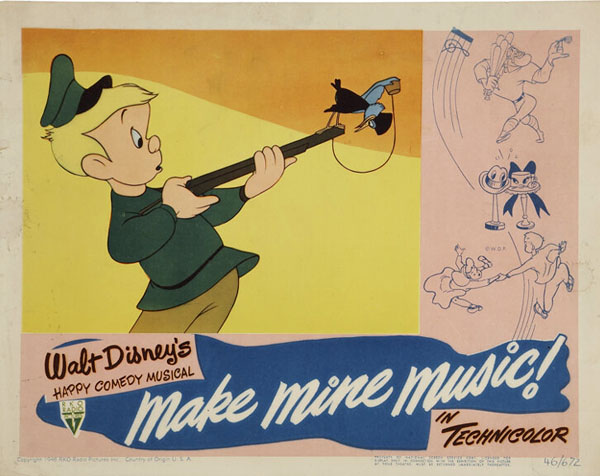
Here’s a special animator breakdown from Disney’s Make Mine Music for the winter season.
In 1936, Russian composer Sergei Prokofiev (1891-1953) wrote and produced Peter and the Wolf, a symphonic fairy tale for children first performed in the Large Hall of the Moscow Conservatory. While a narrator told its story, the orchestra uses different instruments to play a “theme” representative of each character: a string quartet for young Peter, a flute for a songbird, an oboe for a duck, the cat accompanied by a clarinet; a bassoon for Peter’s grandfather, and a woodwind and trumpet theme for the hunters, with their firearms set to timpani and bass drums.
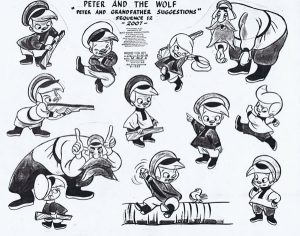 In February 1938, during a concert tour in the United States, Prokofiev met several producers in Hollywood, including Walt Disney. Disney, studio composer Leigh Harline, and Prokofiev’s lawyer Randolph Polk watched Prokofiev play through a piano score of “Peter and the Wolf” at the Hyperion studio, with the notion of producing a future adaptation of the story. Meanwhile, Prokofiev proceeded with his U.S. concert tour of “Peter,” which made its American debut in Boston a month later.
In February 1938, during a concert tour in the United States, Prokofiev met several producers in Hollywood, including Walt Disney. Disney, studio composer Leigh Harline, and Prokofiev’s lawyer Randolph Polk watched Prokofiev play through a piano score of “Peter and the Wolf” at the Hyperion studio, with the notion of producing a future adaptation of the story. Meanwhile, Prokofiev proceeded with his U.S. concert tour of “Peter,” which made its American debut in Boston a month later.
Fantasia, Walt’s most ambitious (and expensive) project to date, premiered in November 1940 and was released in Los Angeles in January 1941. The feature did not perform well at the box office, but Disney planned to make new versions of Fantasia annually, removing some segments for new additions as early as April-May 1940. Disney envisioned “Peter and the Wolf” as one of the replacements. After Walt signed a contract with Prokofiev in February 1941, Leopold Stokowski recorded its musical score on Disney soundstages. Frank Tashlin, then a storyman at Disney, developed an early version of “Peter and the Wolf” with Sam Cobean, notable for his later gag cartoon work in The New Yorker. Tashlin and Cobean produced Leica reels for “Peter”—film strips of story sketches—synchronized to Serge Koussevitzky’s 1939 phonograph recording for Victor.
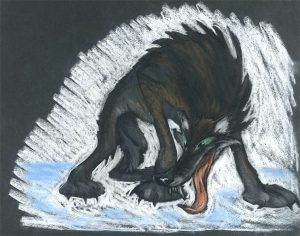 Martin Provensen, an artist in Joe Grant’s model department, also developed a storyboard for Peter and the Wolf. In an interview with JB Kaufman, Provensen recalled: “I did it all in pastel on black paper. It had a very Russian feel to it. And Disney liked it, but then the final version was pure Disney… I wanted it to look like an icon, a Russian icon, which would have been beautiful, but at that time, the studio wasn’t interested.” After Fantasia’s box-office disappointment, Disney’s studio struggled economically and shelved “Peter” altogether in May. (Despite this decision, in April 1942, as the studio focused on wartime projects, Variety and The Film Daily reported a second Fantasia in progress with “Peter and the Wolf” and “Claire de Lune” — the latter excised from its original — intended as segments.)
Martin Provensen, an artist in Joe Grant’s model department, also developed a storyboard for Peter and the Wolf. In an interview with JB Kaufman, Provensen recalled: “I did it all in pastel on black paper. It had a very Russian feel to it. And Disney liked it, but then the final version was pure Disney… I wanted it to look like an icon, a Russian icon, which would have been beautiful, but at that time, the studio wasn’t interested.” After Fantasia’s box-office disappointment, Disney’s studio struggled economically and shelved “Peter” altogether in May. (Despite this decision, in April 1942, as the studio focused on wartime projects, Variety and The Film Daily reported a second Fantasia in progress with “Peter and the Wolf” and “Claire de Lune” — the latter excised from its original — intended as segments.)
By 1944, Walt reflected on Fantasia, intending to produce features not of full-length stories but a compilation of shorts strung together by a loose theme—generally known to fans as “package features.” The May 31, 1944 issue of Variety announced the insertion of “Peter and the Wolf” in Disney’s latest project, then under its working title Swing Street (its namesake guided by an affiliation with famous bandleader/clarinetist Benny Goodman.) Dick Huemer and Eric Gurney reworked Disney’s version of “Peter and the Wolf”; then, in July 1944, Homer Brightman was brought in to furnish the story with new gag material.
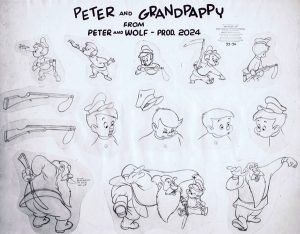 In July 1945, Disney’s forthcoming package feature was now entitled Make Mine Music. It boasted such talents as Benny Goodman, Nelson Eddy, Dinah Shore, The Andrews Sisters, and Jerry Colonna for its animated segments—a mixture of classical and popular music. The final animation of “Peter and the Wolf” was approved, and scene assignments were cataloged in a final production draft in October 1945. Make Mine Music premiered on April 20, 1946, in New York City but was not widely released until August 15, possibly due to wartime shortages of Technicolor film stock.
In July 1945, Disney’s forthcoming package feature was now entitled Make Mine Music. It boasted such talents as Benny Goodman, Nelson Eddy, Dinah Shore, The Andrews Sisters, and Jerry Colonna for its animated segments—a mixture of classical and popular music. The final animation of “Peter and the Wolf” was approved, and scene assignments were cataloged in a final production draft in October 1945. Make Mine Music premiered on April 20, 1946, in New York City but was not widely released until August 15, possibly due to wartime shortages of Technicolor film stock.
Disney released “Peter and the Wolf” as a standalone short on September 14, 1955, crediting director Gerry Geronimi, Dick Huemer, and Eric Gurney for its story adaptation (without mention of Brightman’s involvement), layout men Charles Phillipi and Hugh Hennessy, background artist Claude Coats, animators Eric Larson, Ward Kimball, Ollie Johnston, and John Lounsbery, effects animator George Rowley, and Ed Plumb’s musical score. (While credited in Make Mine Music, animators Judge Whitaker and Don Patterson’s names didn’t appear in the 1955 reissue.)
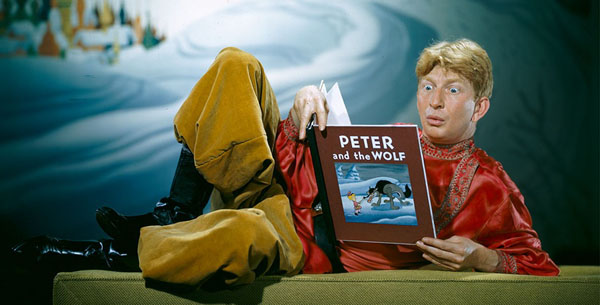
Sterling Holloway, a regular in Walt’s repertoire of character actors, narrated Peter and the Wolf. A few years after the release of Make Mine Music, Holloway recounted Peter in an RCA Little Nipper Storybook Album, released in 1949. Holloway recorded a third version of Peter in 1958 for a Disneyland Records album that paired it with The Sorcerer’s Apprentice. In 1969, Holloway made a final rendition for a new stereo release as monophonic records became extinct.
Besides its theatrical reissue, Disney featured the segment in “The Fourth Anniversary Show” in his Disneyland television series, which aired on ABC on September 11th, 1957. In this sequence, Walt recounts Sergei Prokofiev’s visit to the Hyperion studio, and the viewer is transported back to 1938 when Prokofiev—portrayed by pianist Ingolf Dahl—played his piano score to “Peter and the Wolf” for Walt.
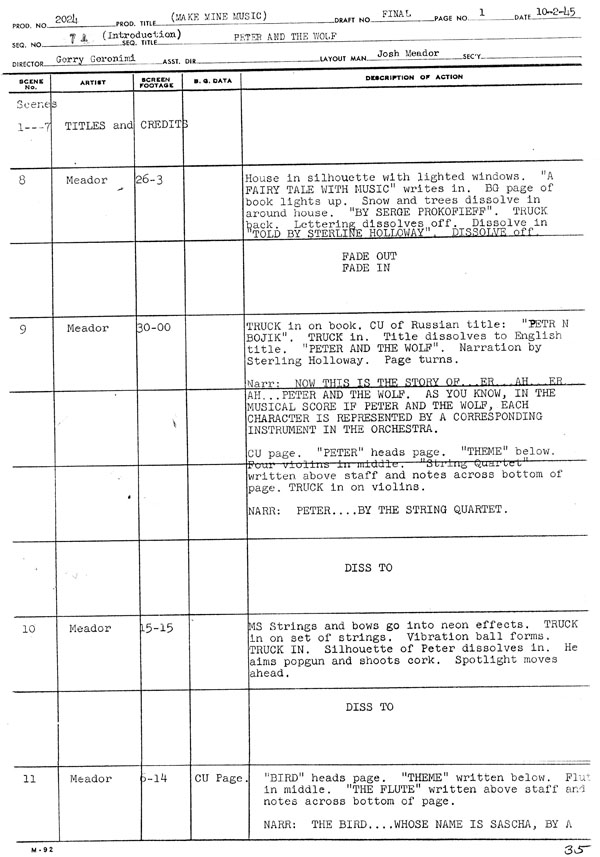
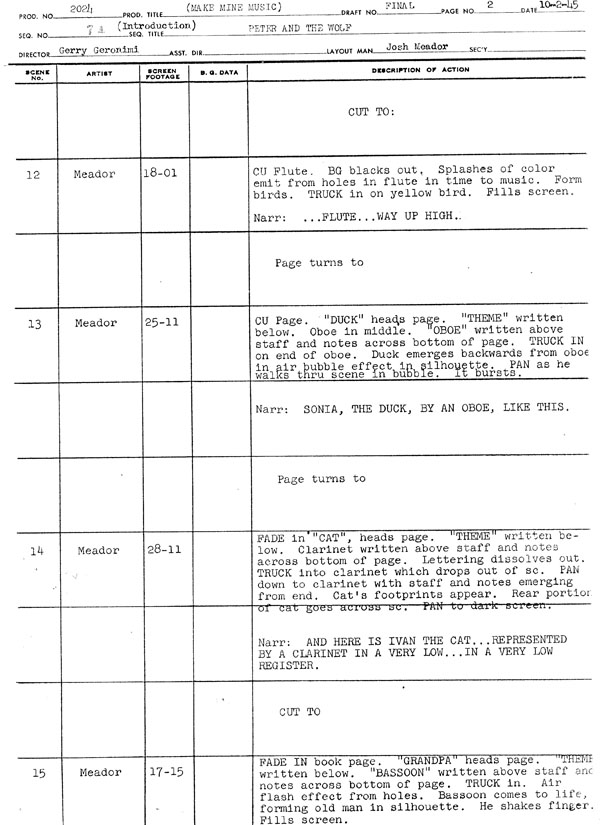
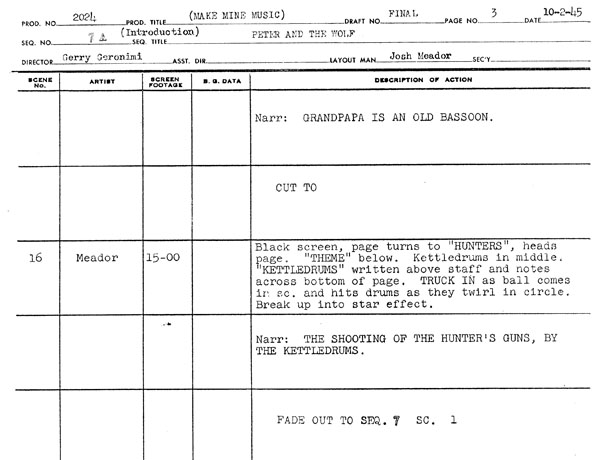
(click thumbnails below to enlarge)
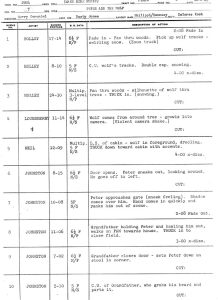
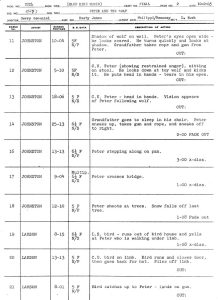
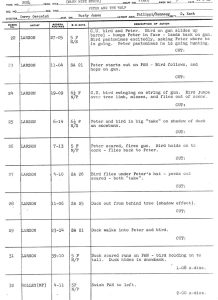
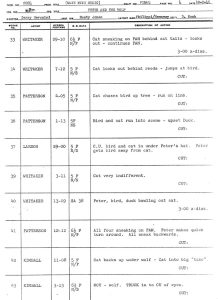
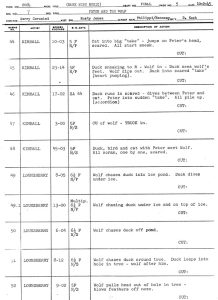
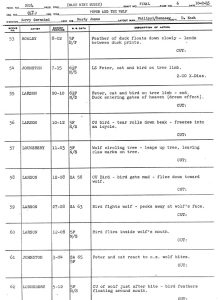
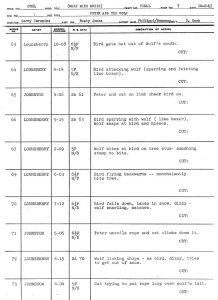
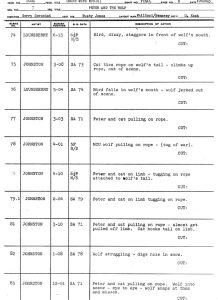
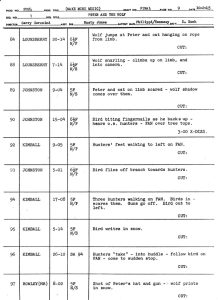
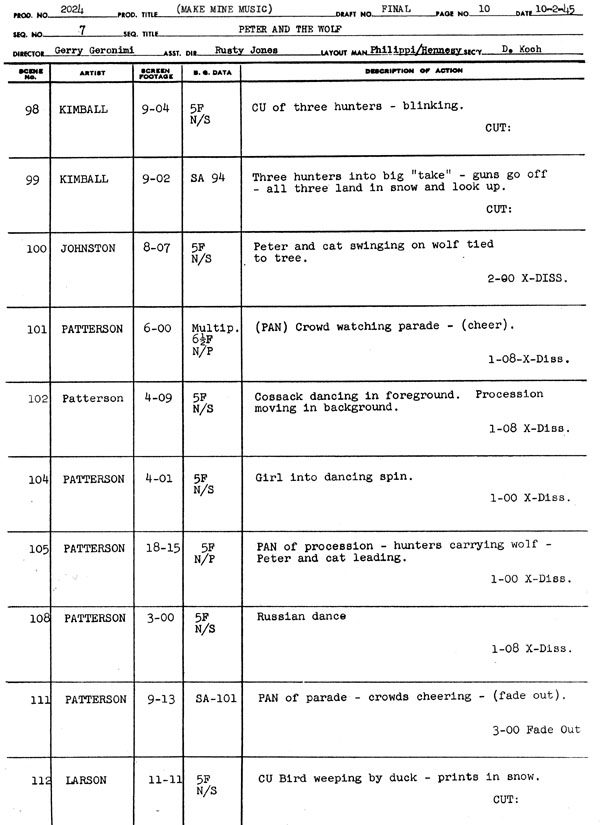
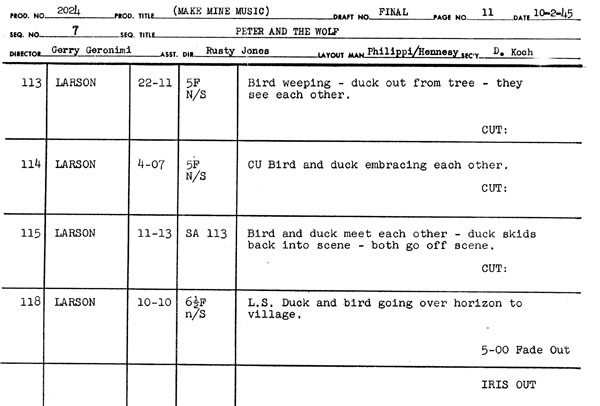
Thanks to Michael Barrier, JB Kaufman, and Didier Ghez for the vital information shared on this post and Frank M. Young for peer-reviewing and copy-editing. The animator identifications originate from the final scene production draft above, courtesy of Mark Kausler.